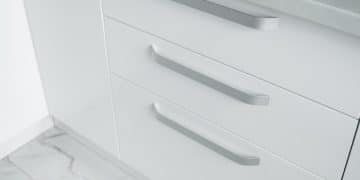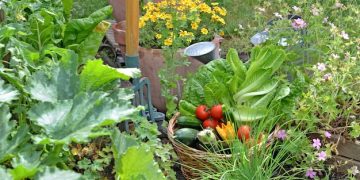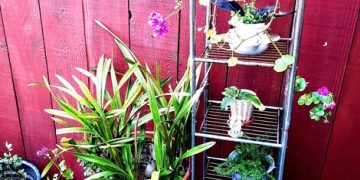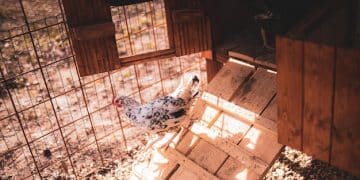Create a Compost Bin: Your Guide to Sustainable Gardening
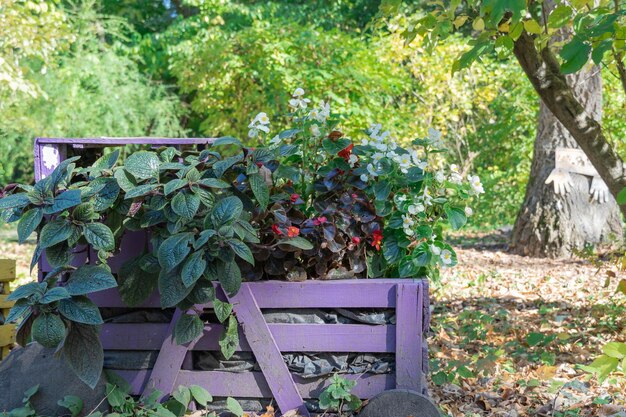
Create a compost bin to recycle kitchen and yard waste into nutrient-rich soil, reducing landfill waste and enhancing your garden’s health and sustainability.
Ready to transform your waste into garden gold? Learning how to create a compost bin is a fantastic way to embrace sustainable gardening, reduce your environmental footprint, and enrich your soil naturally. Let’s dive in!
Why Should You Create a Compost Bin?
Composting is more than just a trendy buzzword; it’s a powerful practice with tangible benefits for your garden and the environment. By choosing to create a compost bin, you’re taking a proactive step towards a greener, healthier lifestyle.
So, why should you take the plunge and build your own compost bin?
Reduce Landfill Waste
Food scraps and yard waste make up a significant portion of what ends up in landfills. By composting, you divert this organic material, reducing methane emissions and conserving valuable landfill space.
Enrich Your Garden Soil
Compost is a natural soil amendment that improves soil structure, water retention, and nutrient content. Your plants will thank you with vibrant growth and abundant yields.
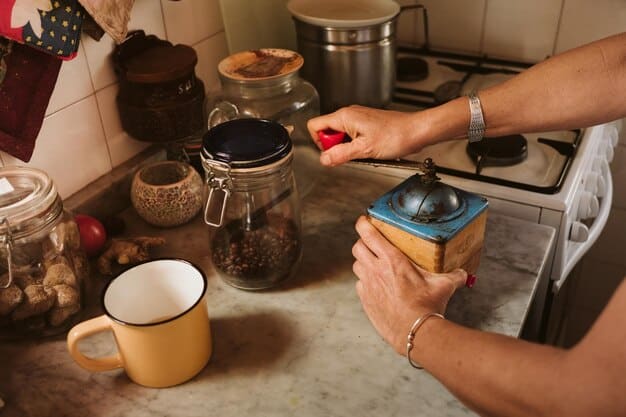
Save Money
Why buy expensive fertilizers when you can create your own nutrient-rich compost for free? Composting saves you money while providing your plants with the best possible nourishment.
In summary, creating a compost bin is a win-win for you and the environment. You reduce waste, enrich your soil, and save money. What’s not to love?
Choosing the Right Compost Bin for Your Needs
Not all compost bins are created equal. Selecting the right one for your needs depends on factors such as space, budget, and the amount of waste you generate. When considering building and creating a compost bin, consider these variables.
Let’s explore some popular options:
Open Compost Piles
The simplest approach is an open compost pile, which is suitable for larger yards and significant volumes of yard waste. It involves piling up organic materials in a designated area.
DIY Compost Bins
For a customizable and often cost-effective solution, consider building your own compost bin using materials like wooden pallets, wire mesh, or plastic containers.
- Wooden Pallet Bin: Easy to assemble and provides good ventilation.
- Wire Mesh Bin: Lightweight and allows for efficient aeration.
- Plastic Container Bin: Durable and keeps the compost contained.
Tumblers
Tumblers are enclosed bins that you rotate to aerate the compost, speeding up the decomposition process. They are ideal for smaller spaces and require less physical effort.
Consider your available space and the amount of waste you produce when choosing a compost bin. DIY options offer flexibility, while tumblers provide convenience and faster results.
Step-by-Step Guide to Building a Simple Compost Bin
Ready to embark on your DIY composting journey? Here’s a step-by-step guide to building a simple and effective compost bin using readily available materials. By learning to build and create a compost bin, you are taking an active step in helping the environment.
Let’s get started:
Materials You’ll Need
- Four wooden pallets (same size)
- Heavy-duty wire or zip ties
- Gloves
- Measuring tape
- Optional: Wood screws and drill for added stability
Instructions
- Prepare the Site: Choose a level spot in your yard that is easily accessible and receives partial sunlight.
- Arrange the Pallets: Stand the pallets on their edges to form a square, creating the walls of the compost bin.
- Secure the Pallets: Use heavy-duty wire or zip ties to connect the pallets at the corners. Wrap the wire tightly around the corners and secure it to ensure stability.
- Add a Front Panel (Optional): Leave one side partially open or create a removable panel for easy access to the compost. You can achieve this by attaching a pallet with hinges or using hooks and eyes.
With these simple steps, you’ll have a functional compost bin ready to start accepting your kitchen and yard waste. It’s a rewarding project that contributes to a more sustainable lifestyle.
What to Compost (and What to Avoid)
Composting is a science, and like any science, there are rules to follow for optimal results. Knowing what to compost and what to avoid is crucial for creating healthy, odor-free compost. When learning how to create a compost bin, knowing what you can and cannot compost is essential.
Let’s break it down:
“Greens” (Nitrogen-Rich Materials)
These materials provide nitrogen, which is essential for the composting process. They tend to be moist and decompose quickly.
- Grass clippings
- Vegetable scraps
- Fruit peels
- Coffee grounds
“Browns” (Carbon-Rich Materials)
Browns provide carbon, which acts as a food source for microorganisms. They are typically dry and decompose slowly.
- Dry leaves
- Shredded paper
- Cardboard
- Twigs and small branches
What to Avoid
Some materials can hinder the composting process, attract pests, or create unpleasant odors.
- Meat and dairy products
- Oily foods
- Diseased plants
- Pet waste
Maintaining a balance of greens and browns is key to successful composting. A good rule of thumb is to aim for a 1:1 or 2:1 ratio of browns to greens. This ensures proper aeration and decomposition.
Maintaining Your Compost Bin for Optimal Results
Creating a compost bin is just the first step. To reap the full benefits of composting, you need to maintain your bin properly. When you create a compost bin, you need to commit to maintaining it.
Here are some essential tips:
Turning the Compost
Turning the compost regularly aerates the pile, providing oxygen for the microorganisms that break down the organic matter. Aim to turn your compost every 1-2 weeks.
Moisture Management
The compost should be moist but not soggy. If it’s too dry, add water. If it’s too wet, add more browns.
- Too Dry: The compost will decompose slowly. Add water until it’s damp like a wrung-out sponge.
- Too Wet: The compost will become anaerobic and smelly. Add dry materials like leaves or shredded paper to absorb excess moisture.
Troubleshooting Common Issues
Even with the best intentions, composting can sometimes present challenges.
- Smelly Compost: This usually indicates a lack of oxygen. Turn the compost more frequently and add more browns.
- Slow Decomposition: This could be due to a lack of moisture or nitrogen. Add water or more greens.
By following these maintenance tips, you can ensure your compost bin produces a valuable soil amendment for your garden.
Using Your Compost in the Garden
After weeks or months of patient decomposition, your compost is finally ready to use. This nutrient-rich material can work wonders for your garden, improving soil health and boosting plant growth. Once you create a compost bin and maintain it properly, applying the compost to your garden becomes the final step.
Here’s how to use your compost effectively:
As a Soil Amendment
Mix compost into your garden beds before planting to improve soil structure, water retention, and nutrient content. Aim for a 2-4 inch layer of compost.
As a Top Dressing
Spread a thin layer of compost around existing plants to provide a slow-release source of nutrients. This is particularly beneficial for heavy feeders like tomatoes and roses.
Compost is a valuable resource that can transform your garden into a thriving ecosystem. By incorporating it into your gardening practices, you’ll not only improve plant health but also reduce your reliance on synthetic fertilizers.
| Key Point | Brief Description |
|---|---|
| ♻️ Reduce Waste | Divert kitchen and yard waste from landfills. |
| 🌱 Enrich Soil | Improve soil structure and nutrient content. |
| 💰 Save Money | Reduce the need for store-bought fertilizers. |
| 🏡 DIY Project | Create a custom composting solution tailored to your needs. |
FAQ About Creating and Using Compost Bins
▼
Compost bins reduce landfill waste, enrich garden soil with nutrients, save money by reducing fertilizer needs, and promote sustainable gardening practices.
▼
You can compost “greens” like grass clippings, vegetable scraps, and coffee grounds, as well as “browns” such as dry leaves, shredded paper, and cardboard.
▼
Turning your compost every 1-2 weeks aerates the pile, providing oxygen for decomposition. Regular turning speeds up the composting process significantly.
▼
A smelly compost usually indicates a lack of oxygen. Turn the compost more frequently and add more “brown” materials like dry leaves or shredded paper.
▼
Finished compost is dark brown, crumbly, and has an earthy smell. It should no longer resemble the original materials you put in the bin.
Conclusion
Creating a compost bin is a simple yet impactful way to promote sustainability, reduce waste, and nourish your garden. By following these steps and incorporating composting into your gardening routine, you’ll be well on your way to a healthier, more eco-friendly lifestyle.
